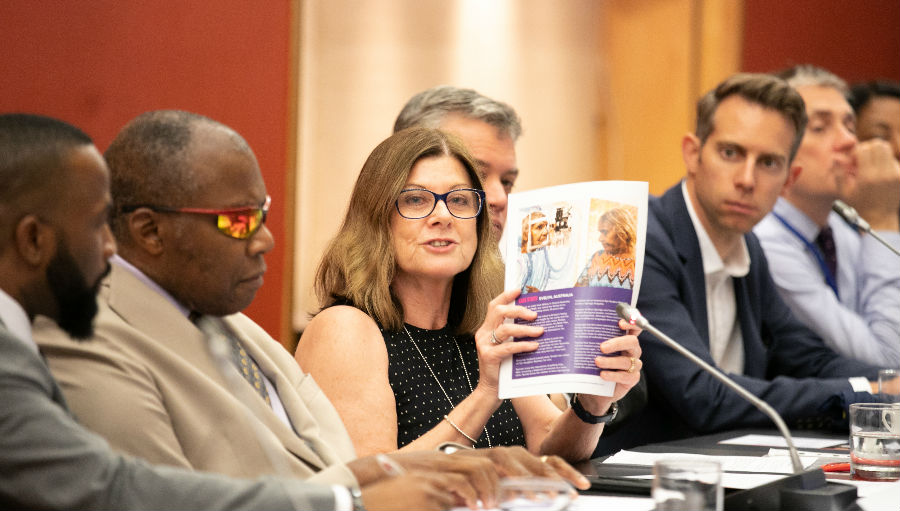Join a powerful, unprecedented alliance for better eye health for all.
Join IAPB-
Choose an alternate language here
 The Sustainable Development Goals (SDGs) are about to shift gear and the global community will be urged to do more. The SDG Summit taking place during the UN General Assembly later this month will declare a decade of action and delivery on sustainable development to start in 2020. So while the current period of the SDGs has been largely marked by a period of reflection and understanding, efforts to accelerate change to achieve the goals will now be expected. At its core, is the affirmation to ‘leave no one behind’; a cry that means more than just words but demands action.
The Sustainable Development Goals (SDGs) are about to shift gear and the global community will be urged to do more. The SDG Summit taking place during the UN General Assembly later this month will declare a decade of action and delivery on sustainable development to start in 2020. So while the current period of the SDGs has been largely marked by a period of reflection and understanding, efforts to accelerate change to achieve the goals will now be expected. At its core, is the affirmation to ‘leave no one behind’; a cry that means more than just words but demands action.
While not an explicit feature within the words of the SDGs, their targets and indicators, eye health has a major role to play in the movement towards sustainable development. Hundreds of millions of people lack access to eye care services around the world; meaning the central goal of achieving SDG 3 on health and wellbeing and achieving Universal Health Coverage cannot be reached unless that gap is closed. However, we also know that good eye health and the full inclusion of people with vision related disability in society, cuts across all the SDGs – from reducing poverty (SDG 1), ensuring participation in education (SDG 4), fostering economic growth and employment (SDG 8), reducing inequalities within and among countries (SDG 10), how we deliver eye health services impacting on sustainable consumption (SDG 12) to safeguarding the environment (SDG 13).
One particular area we know requires the attention of the eye health community is addressing gender inequity (SDG 5) – closing the gap between men and women, boys and girls in access to eye care. The latest data shows that 55% of people living with vision impairment around the world are women. In industrialised countries this is largely because women live longer than men, but in non-industrialised settings, where cataract is responsible for most blindness, it is often because women are unable to access services with the same frequency as men.
At this year’s IAPB Council of Member’s meeting, The Fred Hollows Foundation is shining a light on gender equity hosting a breakfast “Your Power: Progressing Gender Equity in Eye Health”. We invite you to come along to this thought provoking breakfast to learn more about how you can make change happen for women and girls. Be inspired by our local keynote speaker Lilian Liundi, the Executive Director of TGNP Mtandao, Tanzania’s leading women’s rights organization and a major voice for women’s rights, gender equality/equity and social justice in Tanzania and beyond. You can register for the breakfast here.
The Gender Equity Work Group will also meet prior to the CoM. Over 15 organisations from across IAPB have come together to foster partnerships and collaboration between NGOs who are active around gender equity. The group facilitates learning and seeks to inform, and advocate for, gender equity in eye health. To find out more about this work group click here.
Image on top: Jennifer Gersbeck at a UN High-level Political Forum side-event on vision.